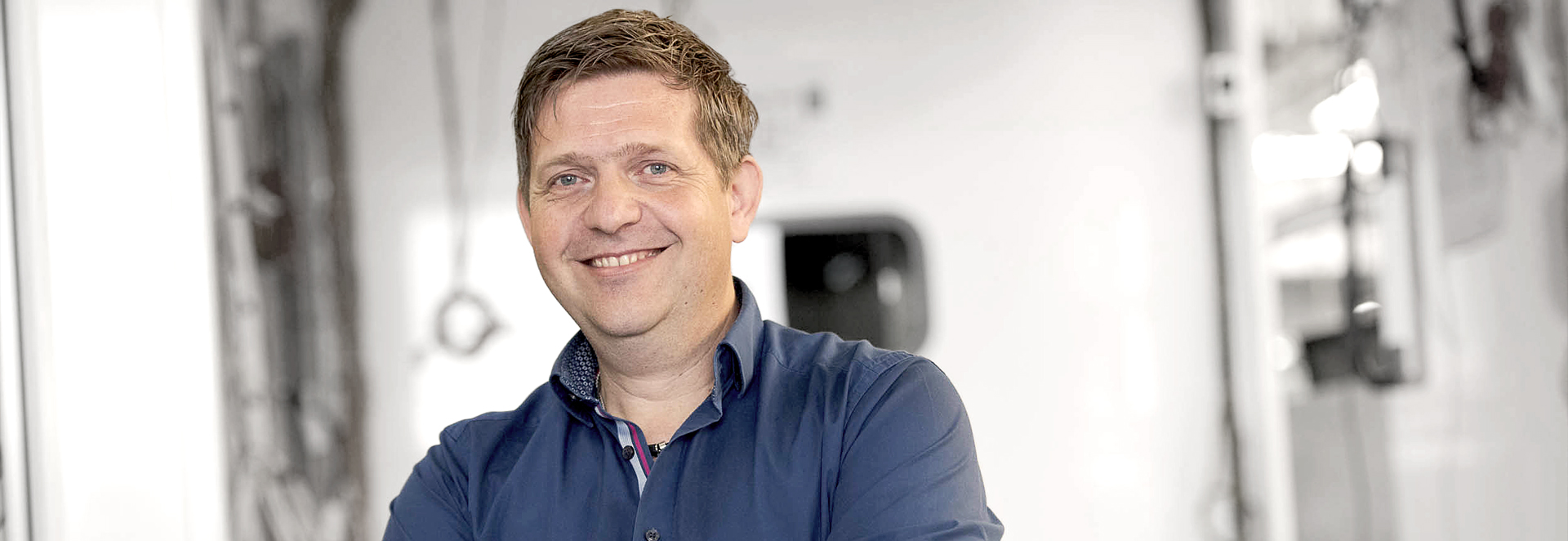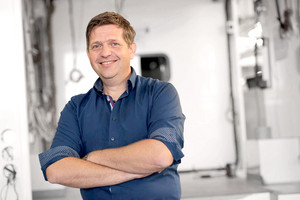There are currently 23 colleagues who did their apprenticeship at WAS, stayed on after successfully completing it and are still with us. To ensure that we continue to inspire young people to join us, we not only offer qualified apprenticeship programmes with fair remuneration, but also our own training workshop, team-building events, apprentice exchanges and, of course, personal support through our mentoring system. We offer a total of seven apprenticeships at WAS, all of which contribute to the company‘s success in their specific areas of expertise. Here, we report from three very different perspectives on what apprenticeships and careers in mechatronics look like.
One of the first: Berthold Raterink, former apprentice electrician.
Berthold Raterink was first three times: He was the company‘s first apprentice, later the first trainer for mechatronics at WAS, and he trained the first female mechatronics engineer in the County of Bentheim. Three milestones that mark not only the company‘s rapid growth, but also the development of the apprenticeship for mechatronics engineers. When Raterink began his training as an electrician in 1991, the profession of mechatronics engineer did not yet exist. What did already exist, however, were the tasks that belong to the job description of the apprenticeship occupation introduced in 1998. Managing Director at the time, Karl-Peter Boddenberg, was also very aware of this. That is why he convinced the then 17-year-old Berthold, who actually wanted to do an apprenticeship as a carpenter, to become an electrician instead. “The company needed electricians to build really good vehicles. He thought there were already enough carpenters. Since I was more interested in the company than I was in carpentry, I didn‘t need much persuasion. The variety of products, developing something new and working on vehicles that save people‘s lives were what drove me back then”, Raterink recalls.
A profession for which there were no apprenticeships at the time.
An apprenticeship to become an electrician was actually intended for the construction sector, but there was still no comparable apprenticeship occupation for the trade. That is why Raterink‘s main tasks during his apprenticeship also included – in typical construction fashion – maintenance of the company building. However, activities such as wiring and building vehicles, component production in the electrical workshop and welding in the metalworking shop were also part of the practical work. It is this versatility that continues to inspire young people to become mechatronics engineers today. “We also made our own tools that we needed to perform the work, and we have developed a test kit too. Incidentally, this is a project that our combined studies student Christine is now developing and improving as part of her dissertation”, says Raterink, drawing the connection.
Development and experience.
So some things have remained the same, but a lot has changed. Politicians have responded to the shortage by approving the apprenticeship for mechatronics engineers – which is a dual course of study.
The company with 15 employees has grown into WAS with a good 400 employees. Berthold Raterink has been with WAS from the very beginning. After completing his apprenticeship, he went on to earn a master‘s degree in electrical engineering and helped build up the technical training at WAS. He was also the trainer who supervised the first mechatronics apprenticeship. He has now passed through multiple departments and seen the company from every side, so to speak. Today, he uses his knowledge in the work preparation department, where he benefits from his experience in planning: Incidentally, Raterink was given the then owner‘s used froggreen Opel Kadett D in the nineties for passing his apprenticeship. I wonder if this was to make up for missing out on doing a carpentry apprenticeship. “I do like to do carpentry in my spare time, but professionally I am still happy with the decision”, Berthold Raterink reassures us.









No Comments